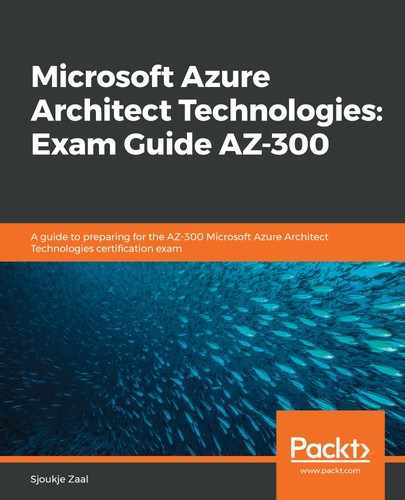Book Description
Become a certified Azure Architect and learn to design effective solutions that span compute, security, networking, and development
Key Features
- Learn to successfully design and architect powerful and cost-effective solutions on Microsoft Azure
- Prepare to gain AZ-300 certification with the help of mock tests and practice questions
- Enhance your computing, networking, storage, and security skills to design modern cloud-based solutions
From designing solutions on Azure to configuring and managing virtual networks, AZ-300 certification can help you achieve all this and more. Whether you want to get certified or gain hands-on experience in administering, developing, and architecting Azure solutions, this study guide will help you get started. The book features not only the different exam objectives, but also guides you through configuring, managing, securing, and architecting Azure resources.
Divided into five modules, this book will systematically take you through the different concepts and features as you advance through the sections. The first module demonstrates how to deploy and configure infrastructure. You will cover techniques related to implementing workloads and security, before learning how to create and deploy apps in the next module. To build on your knowledge, the final two modules will get you up to speed with implementing authentication, data security, and application and platform monitoring, along with covering Azure storage, alerting, and automation strategies. Finally, you'll work through exam-based mock tests with answers to boost your confidence in passing the exam.
By the end of this book, you'll have learned the concepts and techniques you need to know in order to prepare for the AZ-300 exam, along with the skills to design effective solutions on Microsoft Azure.
What you will learn
- Manage Azure subscriptions and resources
- Understand how to migrate servers to Azure
- Configure and manage virtual networks
- Monitor and troubleshoot virtual network connectivity
- Manage Azure Active Directory (Azure AD) Connect and implement multi-factor authentication
- Implement and manage hybrid identities
- Develop solutions that use Cosmos DB and the Azure SQL Database
- Get to grips with implementing secure data solutions
Who this book is for
This book is for solution architects and experienced developers who advise stakeholders and translate business requirements into secure, scalable, and reliable solutions. Technical architects interested in learning more about designing cloud solutions will also find this book useful. Some experience and knowledge of various aspects of IT operations, including networking, security, business continuity, disaster recovery, budgeting, and governance are required to grasp the concepts covered in the book effectively.
